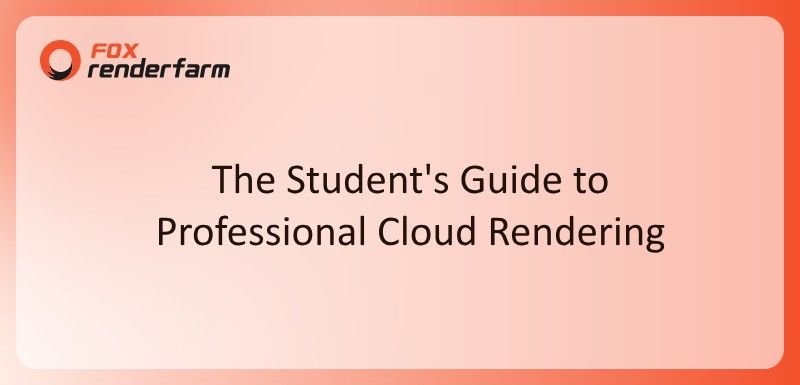Although animation software is optimized to work on most devices, it usually crashes when the load is higher. These sudden crashes while you are working on complex designs mostly occur due to your system's limited capabilities. Software like Maya requires lots of memory and processing power to function properly and render your animations. Besides, simple tasks can take a long time to finish if these software requirements are not met.
This also happens because users install this software without knowing what its requirements are and if their system has all the required components. That’s why this article will provide Maya's computer requirements to help you know if it can work on your system. We will also explain a few additional hardware considerations and a bonus resource to help manage the load on your system better.
Part 1. How Does Your Hardware Affect Maya's Performance?
The way your computer works depends on the strength of its hardware components and how optimized they are. The following components in your computer should meet the Maya hardware requirements to ensure it functions properly:
- Central Processing Unit: A faster processor runs calculations quickly, which helps tools and features in the animation software respond properly. Features and heavy tasks like simulations or animation playback depend greatly on the CPU power.
- Graphics Card: Most beginners miss this component, not knowing that it can improve how objects and animations appear on your screen during their creation. Similarly, viewport speed and proper execution of effects in an animation all rely on your GPU power.
- Memory: More RAM allows Maya to handle larger files and complex scenes without freezing or crashing. You need to ensure its abundant availability, as working on multiple layers and adding textures requires a lot of memory.
- Storage Speed: The type of storage that your device has also matters when analyzing the performance of software on your system. SSDs are recommended as they load scenes quickly and open the animation software much quicker than regular hard drives.
- System Balance: All the components work together to create a balanced system that can manage the tasks easily. However, one weak component can affect the overall speed of the animation process and may even break the connection with other hardware accessories.

Part 2. Minimum Hardware Requirements
While it is recommended to go over the line when building a system to run animation programs, beginners can start by following the minimum requirements only. The following table explains Maya's minimum requirements to function properly:
|
Component |
Minimum Requirement |
|
Operating System |
● Windows 10 (version 1809 or higher) or Windows 11 ● macOS 12.x, 13.x, 14.x, 15.x ● Linux: Red Hat 8.10/9.3/9.5, Rocky Linux 8.10/9.3/9.5 |
|
CPU |
● 64-bit Intel or AMD processor with SSE4.2 support ● Apple Silicon arm64 or Intel x86 for macOS |
|
RAM |
At least 8 GB (16 GB or more is better) |
|
Storage Space |
7 GB of free space to install the software |
|
Graphics Hardware |
RTX 3060 or RX 6600 XT |
|
Pointing Device |
Three-button mouse |
|
Web Browser |
Latest versions of Safari, Chrome, Firefox, or Microsoft Edge for online content access |
Pro Tip for Maya Artists: Improve 3D Rendering Efficiency
As the above sections explain, the Maya system requirements are too much for those just starting out or for studios with limited budgets. A dependable solution to this issue is to use an online render farm service, like Fox Renderfarm, that takes away the rendering pressure from your system. In this way, you can process your animations even when the software requirements are not properly met.

This render farm is accredited by the Trusted Partner Network, an entity managed by the Motion Picture Association, which highlights its strong security standards. Furthermore, new users receive a $25 free render coupon upon registration, which allows them to test their projects without paying hefty amounts. Similarly, it intelligently discovers the users’ local IT system and accommodates its cloud infrastructure services according to its structure and working.
Key Features
- OS Support: Fox Renderfarm’s cloud rendering service operates across various operating systems, including Windows, Mac and Linux. This broad compatibility ensures that users can access and utilize the service regardless of their local computing environment.
- API Support: Industries and studios can integrate their API into their existing production pipelines to programmatically manage rendering tasks. This capability helps save costs on unnecessary hardware upgrades while enhancing efficiency for complex 3D projects.
- SSD Storage: The platform utilizes high-performance Solid-State Drives across its servers for smoother workflows and operations. This technology effectively eliminates I/O bottlenecks, ensuring that animation files are moved and processed without delays.
- High-speed Transmission: Leveraging Raysync's advanced transmission technology, Fox Renderfarm enables real-time file upload and download speeds. Consequently, it ensures that large project files are transferred quickly and efficiently to and from the cloud.
- Certification: The online rendering service holds an ISO27001 certificate, an international standard for information security management systems. Hence, it assures users that their intellectual property and confidential project information are protected with the highest security.
Part 3. Recommended Hardware Requirements
Once your project's needs exceed your system’s capability, you must move towards upgrading it to ensure the software works properly. So, consider these recommended Maya PC requirements before you go on to buy something:
|
Component |
Recommended Requirements |
|
Operating System |
● Windows 10 (version 1809 or higher) or Windows 11 ● macOS 12.x, 13.x, 14.x, 15.x ● Linux: Red Hat 8.10/9.3/9.5, Rocky Linux 8.10/9.3/9.5 |
|
CPU |
● AMD Threadripper™ PRO 7995WX 96 Core ● Intel Core™ Ultra 9 285K 24 Core |
|
RAM |
16-32 GB |
|
Storage Space |
500 GB SSD Storage |
|
Graphics Hardware |
NVIDIA RTX PRO™ 6000 GeForce RTX 4090 |
|
Pointing Device |
Three-button mouse |
|
Web Browser |
Latest versions of Safari, Chrome, Firefox, or Microsoft Edge for online content access |
Part 4. Additional Hardware Considerations
Besides basic hardware components that influence how the animation program runs on your system, there are additional considerations that you can consider. So, fulfill these secondary Maya software system requirements to run the processes smoothly:
- Monitor: A high-resolution screen helps you see fine details within your work much more clearly. Similarly, wide monitors provide increased space, which allows you to effectively arrange various tools and windows.
- Input Devices: Accessories, such as a quality mouse featuring multiple programmable buttons, can truly make your work easier. Additionally, keyboards equipped with customizable shortcut keys can consistently save valuable time during complex tasks.
- Cooling Solutions: Powerful computer systems naturally produce considerable heat when used for extended periods of intense work. Hence, adding extra cooling fans or specialized cooling pads can prevent your hardware from overheating.
- Power Supply: A dependable power unit is important as it helps deliver consistent and stable energy to all parts of your computer. While making a choice, always select a power supply with enough wattage to support your system’s demands.
- Port Options: Modern USB or Thunderbolt connections allow for incredibly quick file transfers. These specific ports become especially useful when you are regularly working with very large files or external storage devices.
Conclusion
To conclude, Maya computer requirements are generally higher due to the advanced features and the ability to handle complex animations. So, your computer needs to match the correct system setup to get the best results while using this software.
Otherwise, weak hardware can slow down your work and affect the quality of your animations. Here, using Fox Renderfarm’s cloud rendering services can help ease the pressure from your hardware components.



![5 Best Laptops for Rendering in 2025 [Powerful Devices]](http://static.rayvision.com/media/28_Top_picks_of_5_best_laptop_for_modeling_and_rendering_in_2025_333ddca798.png?w=1000&q=100)










